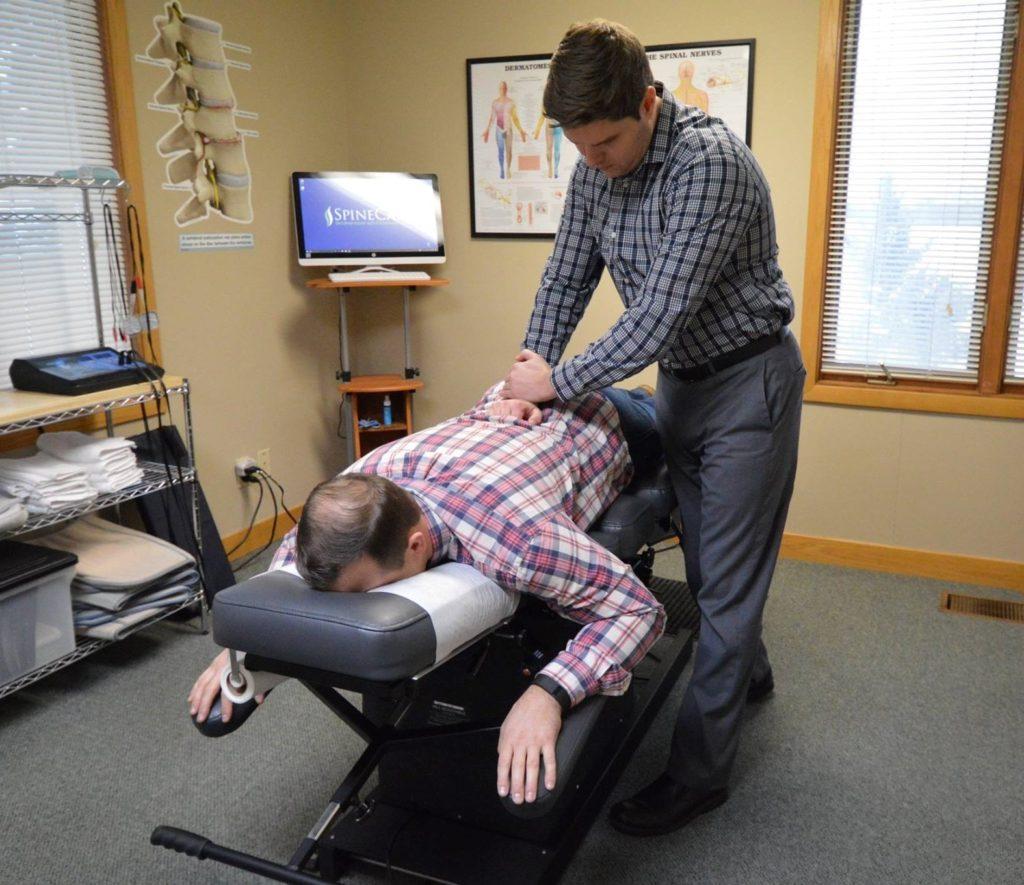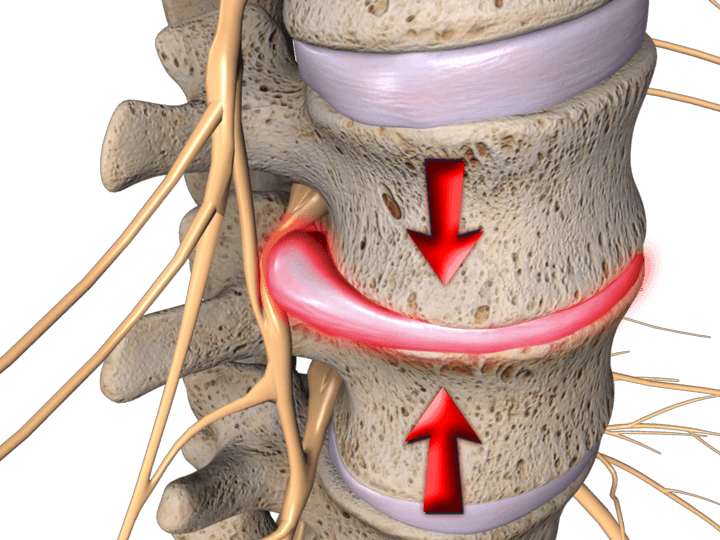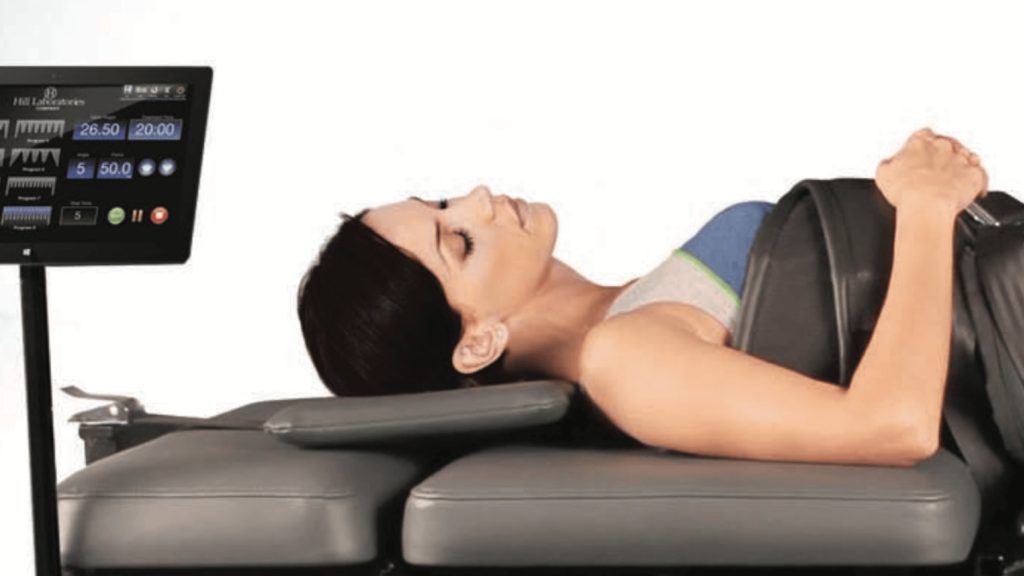Do you suffer from unrelenting, shooting pain that travels from your thighs, through the legs, and even to your feet? No matter what you do, what position you get in… it just never seems to go away? Even the thought of bending over to tie your shoe gives you worry? You may be dealing with a sciatica, also known as sciatic nerve pain.
What Is Sciatica?
Sciatica is, more or less, a pinched nerve in the low back that causes shooting leg pain. Depending on location and the severity of the pinch, this pain can run the entirety of the leg and into the foot. Patients generally describe the pain as being severe and similar to a toothache, and is usually felt on a single side only.
What Causes Sciatica?
The most common cause I see for sciatica is due to a spinal disc bulge, or herniation, that puts pressure on a nerve (causing a pinch). Disc bulges usually happen from repetitive stress (think bad posture, heavy lifting, etc.), falls, and twisting injuries to the low back.
The second cause is due to inflammation of soft tissues surrounding the spine, like muscles and ligaments. A very common cause of sciatic-like pain is due to piriformis syndrome. The piriformis muscle, if inflamed, can irritate the nearby sciatic nerve and cause pain, numbness and tingling.
Unfortunately, sciatic nerve pain can become so unbearable that many suffers resort to high dosages of pain-medications, and even consider risky surgery. Luckily, there are alternatives that are far less invasive, and just as effective for relieving sciatic pain.
3 Essential Ways to Help Relieve Sciatica
Over the years, I have successfully treated hundreds of patients dealing with sciatica. These are my treatment recommendations that are tried and true for relieving sciatica in a drugless, non-surgical way.
Spinal Decompression Therapy
Spinal decompression therapy, or SDT, I almost recommend to all patients that come into my office dealing with sciatica and nerve pinches. Why? Because it’s arguably the most effective, conservative treatment for disc bulges currently available. SDT works by decreasing disc bulges by taking pressure off pinched nerves through a controlled traction, or pull, to the low back.
SDT is effective because it creates a negative pressure (vacuum) within the discs. This negative pressure is what sucks bulging portions of a disc back into its normal place, removing pressure from surrounding nerves, and puts the body in a position to heal naturally.
The goal of SDT is to fix the root cause of the pain by directly treating the spinal disc injury. By doing this, patients that have been treated with SDT frequently report very long-lasting results.
Learn more about spinal decompression therapy.

Dr. Rowe giving adjustment
Chiropractic Care
Just how effective is a chiropractic adjustment for sciatic nerve pain? In 2006, the Official Journal of the North American Spinal Society found that after comparing results in 102 adults who suffered from sciatic nerve pain, those who received chiropractic adjustments experienced less local pain, fewer number of days with pain, and fewer cases of moderate or severe pain compared to people who didn’t receive adjustments.
Pretty good, huh?
I personally use COX flexion-distraction adjustments for patients that receive chiropractic care in my office for sciatica. It is a very gentle approach that doesn’t involve twisting or ‘cracking’. Similar to SDT, it focuses on decreasing pressure in spinal discs, which then removes pressure off surrounding nerves. A very informative page on flexion-distraction technique can be found here.
Learn more about chiropractic.
Stretches & Exercise
A key factor in treating sciatica is controlling inflammation, both to the spinal joints and their surrounding muscles, ligaments, and tendons. That’s why stretching and exercise are so important. Maintaining flexibility and building strength will help prevent injuries, and reduces stress on the low back and legs.
Every patient that comes in my office, regardless of their area or type of pain, are given recommendations on stretches and exercise. In my mind, it’s like a dentist recommending brushing and flossing.
For mild sciatica, patients may be able to perform light stretches in bed. A great set of simple stretches can be found here. For more severe sciatica, I usually recommend water therapy, since water takes a great deal of pressure off the back, and allows for people to move much easier. Locally in SW Michigan, there are many gyms and health clubs that have pool access, such as the YMCA and the Renaissance Athletic Club.
How Long Does It Take for Sciatica to Heal?
If left untreated, sciatica may persist for 6-8 weeks or longer. Getting proper care will significantly decrease this amount of time, and may help decrease the chance of future sciatic pain.
If your sciatica pain is due to a disc bulge or herniation, this is very serious since there’s a possibility it will get significantly worse over time without proper treatment. At SpineCare Decompression and Chiropractic Center, we deal with this issue on a daily basis and have helped hundreds of patients suffering with sciatic nerve pain.
If you’re suffering, and need help, please call our office today at (269) 408-8439.
St. Joseph, MI Chiropractor — Dr. Michael Rowe
Interested in getting more health tips and info? Like us on Facebook or Twitter to get our latest blog postings.
Did you like this post? If so, click the Facebook button below to share it with your friends!



